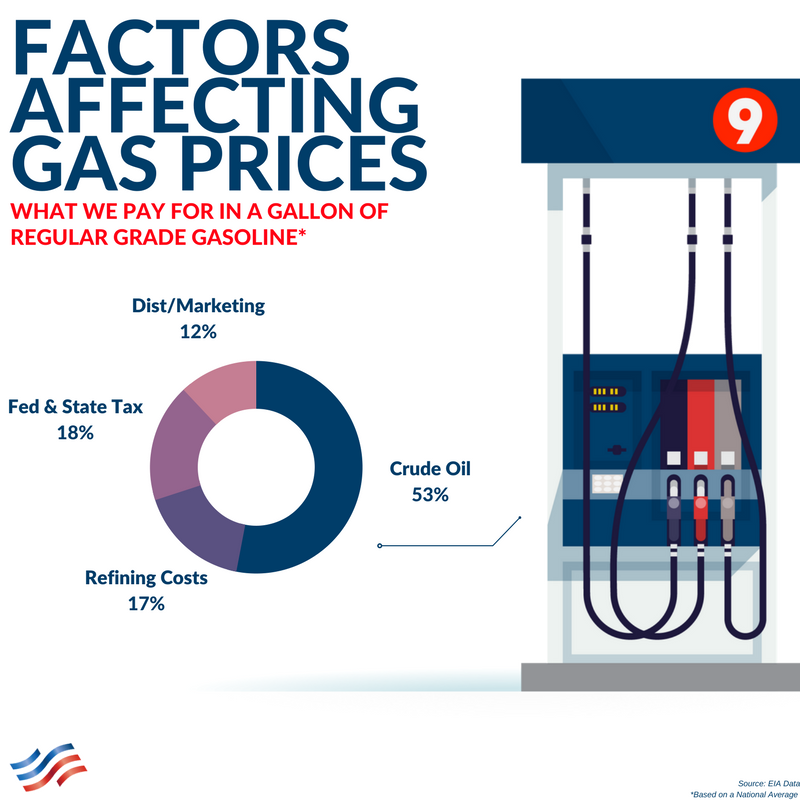Though consumers buy gasoline locally, prices for the fuel are largely determined by the global market for crude oil from which it is made. When the price of crude oil in the global market changes -- whether due to geopolitical events, fluctuations in crude supply or gasoline demand -- prices that consumers pay at the pump change, too.  At the end of 2017, the price of crude oil accounted for 53 percent of the price of gasoline. Local, state and federal taxes made up another 18 percent, while the cost to refine crude oil into gasoline accounted for 17 percent, and the cost to market and distribute gasoline to retail outlets made up 12 percent, according to the U.S. EIA. This breakdown can shift as crude prices change, and it can vary by region depending on taxes, manufacturing, marketing and distribution costs. In recent months, despite increasing U.S. crude oil production, global crude oil prices have climbed, reaching a three-year high in 2017, largely because of reduced crude oil supplies from OPEC and some non-OPEC countries. Gasoline prices have increased along with the price of crude.
At the end of 2017, the price of crude oil accounted for 53 percent of the price of gasoline. Local, state and federal taxes made up another 18 percent, while the cost to refine crude oil into gasoline accounted for 17 percent, and the cost to market and distribute gasoline to retail outlets made up 12 percent, according to the U.S. EIA. This breakdown can shift as crude prices change, and it can vary by region depending on taxes, manufacturing, marketing and distribution costs. In recent months, despite increasing U.S. crude oil production, global crude oil prices have climbed, reaching a three-year high in 2017, largely because of reduced crude oil supplies from OPEC and some non-OPEC countries. Gasoline prices have increased along with the price of crude.  This tightening of the global oil market has been underway since the middle of 2017, when prices -- as indicated by the Brent and West Texas Intermediate benchmarks – began rising after having dropped dramatically on a supply glut stemming from high production and inventories combined with lackluster demand. With OPEC’s agreement to limit output slated to continue through 2018, and gasoline demand on the rise around the world, crude oil and gasoline prices will continue to adjust – changes that are part of the normal ebb and flow in a global marketplace.
This tightening of the global oil market has been underway since the middle of 2017, when prices -- as indicated by the Brent and West Texas Intermediate benchmarks – began rising after having dropped dramatically on a supply glut stemming from high production and inventories combined with lackluster demand. With OPEC’s agreement to limit output slated to continue through 2018, and gasoline demand on the rise around the world, crude oil and gasoline prices will continue to adjust – changes that are part of the normal ebb and flow in a global marketplace.
Topics


